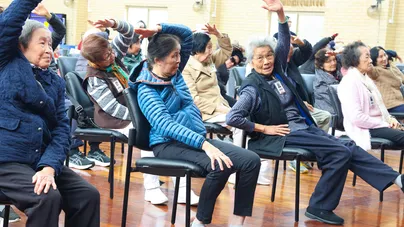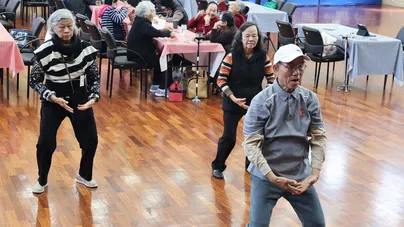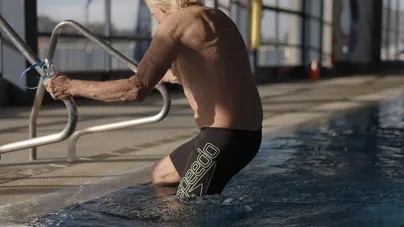Exercise is one of the most important things you can do now to take charge of how you age.
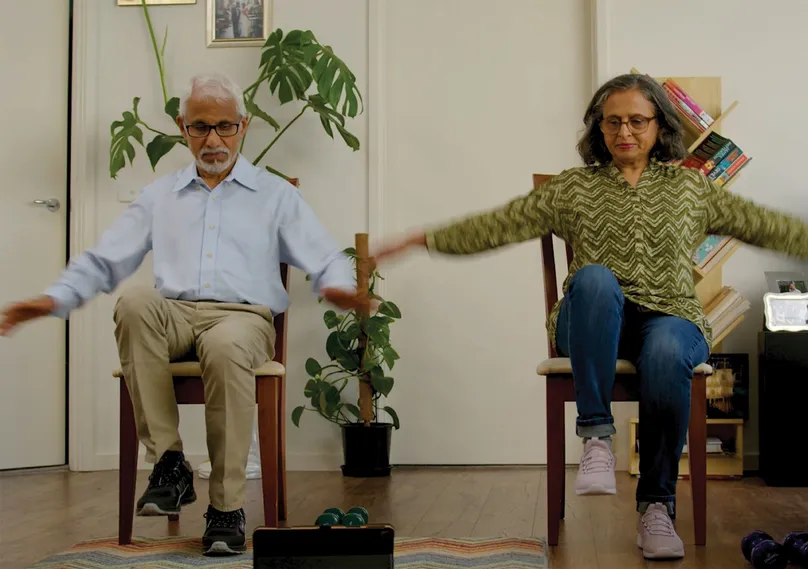
What is healthy ageing?
Ageing well means making choices that help you stay independent for longer.
Research has shown that 25% of ageing is determined by genetics. The other 75% is down to lifestyle choices you make every day.
These choices include how you stay socially connected, whether you challenge your brain, and how you think and feel about your life.
How much physical activity you do is another important part of staying healthy as you age.
Why is healthy ageing important?
When you focus on staying well, you can thrive as part of your community. As you get older, your risk of developing a health condition increases. Your physical strength and mobility can decline quicker too.
It's true that more than half of the people in Australia over the age of 65 have a chronic health condition. But becoming older doesn't mean you have to be vulnerable or dependent.
Choosing to be physically active at every age is the cheapest and most effective defence against age-related decline.
The benefits of exercise for healthy ageing
Regular physical activity only gets more rewarding as you age. It supports your mental, physical, and brain health.
Exercise makes you feel good
Exercise provides a wide range of important benefits for your mental health and overall wellbeing, including social improvements.
Exercise helps you:
- Sleep better
- Have more energy
- Have more fun, improving your mood and confidence
- Meet new people and make friends
Exercise makes your body feel good
Some important physical benefits of exercise include:
- Helping you manage and prevent chronic illnesses and disorders such high blood pressure, high cholesterol, type 2 diabetes, heart disease, arthritis, osteoporosis, and insomnia
- Helping you prevent falls and injuries
- Improving how your body functions
- Improving your independence
- Helping you manage pain
- Keeping your joints and bones healthy
Exercise makes your brain feel good
Exercise also helps keep your brain healthy. When you exercise, you release chemicals that encourage new growth of blood vessels and cells in your brain. That means regular physical activity can improve your memory and cognitive function. In fact, Harvard Health Publishing reports that moderate exercise programs can boost your memory and thinking skills in as little as 6 months.
Exercise also causes your brain to fill up with feel-good hormones that reduce pain and lift your mood. This helps reduce stress and anxiety, which further supports brain health and clearer thinking.
Where do I start?
Not sure how much physical activity you need to do?
The Department of Health has some easy guidelines to follow. These recommend that older people should be active every day, if possible, or at least for 5 days a week. They suggest moving in as many ways as possible, as well as trying a variety of activities.
Try to complete at least 30 minutes of moderate-intensity physical activity on most days no matter your age, weight, or health condition.
You don’t have to do all of your activity in one go. You can spread your it throughout the day, with 10 minutes here and there.
If you think 30 minutes may be too intense for your fitness level, you could start with as much as you feel comfortable doing. For example, you could go for a 10-minute walk once or twice a day. After a few weeks you could gradually increase your walk from 10 to 15 minutes and work your way up to 30 minutes per day.
Guidelines for exercise intensity
Not sure what moderate-intensity physical activity feels like?
This refers to aerobic exercise that gets your heart rate up and makes you breathe a bit harder (but doesn't put you fully out of breath). Aerobic exercise helps you maintain a healthy weight and supports your cardiovascular health.
One easy way to check the intensity of your exercise is to use the talk test:
- Light intensity = you can talk or sing comfortably whilst moving
- Moderate intensity = you can talk comfortably but you're not able to sing whilst moving
- High intensity = you can't talk or sing whilst moving
Here are a few examples of moderate-intensity exercise:
- Brisk walking
- Water aerobics
- Gardening and mowing the lawn
- Riding a bike on flat ground
- Washing the car
- Heavy housework
Types of exercise
Alongside your 30 minutes of daily aerobic exercise, you should also try to include 3 other types of physical activity in your weekly exercise routine. These are flexibility, strength, and balance exercises.
- Flexibility or stretching exercises, such as yoga and Tai Chi, help to improve your range of motion
- Strength training, such as resistance training or weight-bearing exercise, helps build strength in your muscles and bones
- Balance activities, such as these 10 balance exercises, help prevent falls and injuries by improving things like leg strength and hip flexibility
It's recommended to do some stretching exercises every day, if you can. And aim to include strength exercises about 2 or 3 times a week.
You can tailor your routine to meet your goals. For example, if you're at risk of falls, you could aim to do daily balance exercises.
Or, if you have an injury, you may be able to use specific strength exercises to help it heal. (Just look at how Paul the Powerlifter went from injury to champion!)
How to stay on track
According to the Bureau of Statistics, only 1 in 3 Australians aged 65 and over met the physical activity guidelines in 2022.
Regular exercise helps you feel the benefits of moving more often. It means you can maintain your independence for longer. Though it can be difficult to create a new healthy habit of exercising, it's worth it.
Here are some helpful tips for staying on track:
- Get into a routine – plan your physical activity for a regular time and place
- Be social – ask a friend, neighbour, or relative to join you, or join some exercise classes
- Add variety – keep things interesting and try different types of physical activity
Start today
It’s never too late to get started. If you need more information, take the LiveUp quiz or get in touch with one of our helpful navigators on 1800 951 971. Or you can read more of LiveUp's exercise tips for older people.
Remember to drink plenty of water during physical activity, and consult your doctor when planning a new exercise routine.
You can also follow links below for more information:
References
Australian Government Department of Health. (2021). Physical activity and exercise guidelines for all Australians: For older Australians 65 years and over. https://www.health.gov.au/topics/physical-activity-and-exercise/physical-activity-and-exercise-guidelines-for-all-australians/for-older-australians-65-years-and-over
Australian Bureau of Statistics. (2023). Physical activity, reference period 2022. https://www.abs.gov.au/statistics/health/health-conditions-and-risks/physical-activity/latest-release
Harvard Health Publishing. (2022, September). Exercise can boost your memory and thinking skills. Harvard Health Blog. https://www.health.harvard.edu/mind-and-mood/exercise-can-boost-your-memory-and-thinking-skills
Healthdirect. (2021). Physical activity guidelines for older people. https://www.healthdirect.gov.au/physical-activity-guidelines-for-older-adults
How to use this information
LiveUp provides free information to help you make informed decisions about your health. This information is for general and educational purposes only, is not intended to provide a comprehensive guide, and does not replace medical advice. Everyone is different, so some of these tips may work better for you than others. You should use your own judgment and seek medical advice when applying this information to yourself, to determine if it is suitable in your circumstances. Your use of, or reliance on, this information is solely at your own risk. Independent Living Assessment Incorporated is not responsible or liable for any injury, loss, or damage caused as a result of your use of, or reliance on, this information.
Download and print this article:
You can print out the PDF and stick it to your fridge or file away the tips to revisit at a later time.
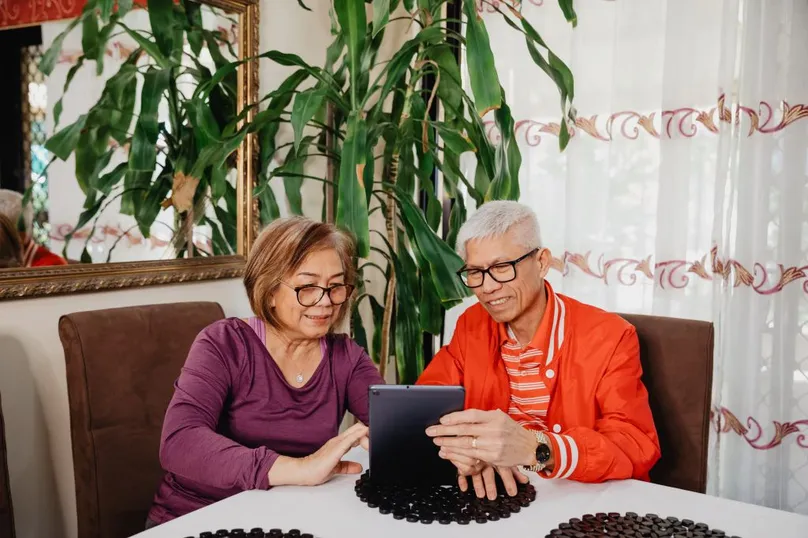
Read more Maintain my health articles
Did you enjoy this article? You may also like reading similar healthy ageing articles.
See all Maintain my health articles